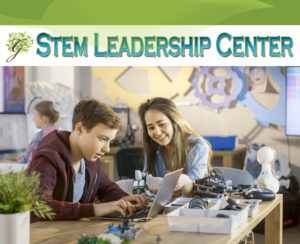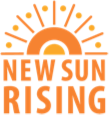How do you begin to teach leadership skills to third, fourth and fifth graders? Last week was the first Grow a Generation Superhero camp. Campers walked away with practiced knowledge of a confidant pose (and the hormone changes that take place when you pose your body is a ‘power’ pose for only a few minutes); inspired to seek out a vision worthy of the best of humanity through examples of many other kids and teens making a change in the world for the better; challenged to take a servant’s attitude keeping in mind the vulnerable; encouraged to seek out and connect with others, particularly mentors, who share their vision and goals; and, the critical thought to sift the possible from the currently impossible, the physics from the fantasy, and use STEM skills to envision then build the tools they need to make the change they want to see in the world.
A discussion of superheroes, particularly cartoon superheroes, colored the week. We began in the Marvel Universe with a discussion of Spiderman, Iron Man, and Black Widow (and the kids  wanted to know more about Bluebird and the Black Knight). Reflecting on the iconic images (most of whom these 8 – 11 year olds had knew very little about), we discussed the ‘power’ poses they were drawn in, the superpowers and gadgets they had, and the idea that each had a nemesis, a great evil in the world they were conquering and that each was created in a culture that needed a symbol of hope and an example that inspired goodness. To elaborate on ‘power’ poses, we watched Amy Cuddy discuss her fascinating research that shows standing in a power pose (for example, in the bathroom for 2 minutes before a big test of interview) changes the levels of the hormones cortisol and testosterone in our blood stream. We practiced our poses in front of a green screen, taking turns as model and photographer while the soundtrack of Ironman played in the background. I introduced James Kakalios, physics professor at the University of Minnesota and author of The Physics of Superheroes, who challenged us to take into account the physical laws of the universe as we imagined becoming superheroes in the world. The day ended with the inspiring story of Craig Kielburger, a modern day superhero who started to change the world at age 12, speaking out against child slavery, child soldiers, and abject poverty that kills thousands of children each day. His confident pose, articulate pleas for action, and vision of providing education and economic opportunities have helped form a network of over a million children seeking to empower children’s rights. One of our camp’s superheroes, the Awesome Abigail, was so inspired by Craig, she wrote to him letting him know how much he motivated her to join the battle to defend the rights of children to safety, food and education.
wanted to know more about Bluebird and the Black Knight). Reflecting on the iconic images (most of whom these 8 – 11 year olds had knew very little about), we discussed the ‘power’ poses they were drawn in, the superpowers and gadgets they had, and the idea that each had a nemesis, a great evil in the world they were conquering and that each was created in a culture that needed a symbol of hope and an example that inspired goodness. To elaborate on ‘power’ poses, we watched Amy Cuddy discuss her fascinating research that shows standing in a power pose (for example, in the bathroom for 2 minutes before a big test of interview) changes the levels of the hormones cortisol and testosterone in our blood stream. We practiced our poses in front of a green screen, taking turns as model and photographer while the soundtrack of Ironman played in the background. I introduced James Kakalios, physics professor at the University of Minnesota and author of The Physics of Superheroes, who challenged us to take into account the physical laws of the universe as we imagined becoming superheroes in the world. The day ended with the inspiring story of Craig Kielburger, a modern day superhero who started to change the world at age 12, speaking out against child slavery, child soldiers, and abject poverty that kills thousands of children each day. His confident pose, articulate pleas for action, and vision of providing education and economic opportunities have helped form a network of over a million children seeking to empower children’s rights. One of our camp’s superheroes, the Awesome Abigail, was so inspired by Craig, she wrote to him letting him know how much he motivated her to join the battle to defend the rights of children to safety, food and education.
 Superman, Wonder Woman, Black Canary, Green Lantern and Green Arrow brought the DC Comic Universe into the Media Lab. Superheroes were products of culture, and while comics exaggerate many features, we discussed how those same features on real models and in magazines and film don’t inspire, but actually harm people. The unrealistic proportions of Barbie, the photo retouching (and real anorexia) of models, and the steroid use of boys trying to gain the muscles and the abdominal ‘six packs’ they see on their superheroes made us consider how we wanted our superhero image to look. We wanted to become superheroes and leaders that inspire others to greatness, to abilify other’s gifts and make them feel powerful beside us. Deepak Choopra led a short reflection on what it is to have a vision of beauty and empowerment as a leader.
Superman, Wonder Woman, Black Canary, Green Lantern and Green Arrow brought the DC Comic Universe into the Media Lab. Superheroes were products of culture, and while comics exaggerate many features, we discussed how those same features on real models and in magazines and film don’t inspire, but actually harm people. The unrealistic proportions of Barbie, the photo retouching (and real anorexia) of models, and the steroid use of boys trying to gain the muscles and the abdominal ‘six packs’ they see on their superheroes made us consider how we wanted our superhero image to look. We wanted to become superheroes and leaders that inspire others to greatness, to abilify other’s gifts and make them feel powerful beside us. Deepak Choopra led a short reflection on what it is to have a vision of beauty and empowerment as a leader.
Paint.net (a free image editing software for Windows OS on the internet) was introduced as students edited out their green screen and began to decorate their images with their own superhero costume. I introduced Joy Lin and her series on Superhero science in TED Education. We also looked at the efforts of real life teen superheroes working to bring peace: Michel Chikwanine (a rescued child soldier), Calista Frederick Jankiewicz (the teen behind Operation Sandy Hook), and Jonathan Lee (the young man who is working to bring North and South Korean children together for a future of peace) inspired Marvelous Madeline to join us in their advocacy of the causes of peace.
Wednesday, we entered the forests of mythology and folklore. Joseph Campell’s Hero’s Journey gave us a navigation map as we picked up and explored the Jungian archetypes of heroic items that become integrated into their costume and gadget belts. Wings (from the Greek god Mercury) granted Odysseus and Perseus flight, on the winged horse Pegasus who granted Belarathon permission to ride, and hung on the backs of angels from every culture convey the ability to traverse great distances quickly with messages of goodness and grace. Swords (Arthur’s Excalibur, Beowulf’s Hrunting, Harry’s Sword of Gryffindor, Aragorn’s Blade of Narsil) were symbols of the strength to protect and administer justice. A helmet was authority and wisdom, a belt represented discipline and self-mastery. Michio Kaku visited the class (via youtube) to share the current state of some of the superpowers we see in superheroes, such as teleportation. But it was Tony Robbins who drove home the point that the power of these symbols is best used when it serves others, particularly the vulnerable. Several teen scientists exemplified the qualities: Jack Andraka discovered a promising test for pancreatic cancer, Lauren Hodge, Shree Bose and Naomi Shah share a passion for biology and medicine as they each unearthed, despite being only teens, new knowledge in cancer research and a mathematical model for the effects of air pollution on asthmatics. We watched a brief talk by one of my personal hero’s invention of a bionic arm (Dean Kamen) and campers went sent home with the challenge to identify their own personal hero.
 Thursday was a field trip to the Toonseum, a Museum of Cartoon Art in Pittsburgh. All of DC and Marvel superheroes had their own books and resources. We finished a scavenger hunt of famous cartoonists’ artwork and had a chance to create our own. Students’ art was hung in the gallery and we did another photo shoot with some cartoon costumes. A high point is when studio director Joe Wos demonstrated some incredible cartooning effects.
Thursday was a field trip to the Toonseum, a Museum of Cartoon Art in Pittsburgh. All of DC and Marvel superheroes had their own books and resources. We finished a scavenger hunt of famous cartoonists’ artwork and had a chance to create our own. Students’ art was hung in the gallery and we did another photo shoot with some cartoon costumes. A high point is when studio director Joe Wos demonstrated some incredible cartooning effects.
The real superhero who opened our final day was Malala Yousafzai (the young Pakistani girl shot for attending school). We listened to her speech to the United Nations and her wisdom to respond to violence with strength, power and courage. Discussions on the final day focused on communities of superheroes: Green Lantern Corps, Teen Titans, the Fantastic Four and the Avengers and introduced a new set of superheroes – “The 99.” Dr. Naif al-Mutawa, the creator of “The 99”, is a Kuwait-born psychologist and businessman. His TED Talk describes how he conceived his superheroes and superheroines for the Muslim world. (Despite concerns from Fox News about Muslim propoganda, “The 99” is not a religious comic; none of the heroes pray, go to mosque or even talk about Islam). Superhero campers learned the importance of joining a team and spent the time to write to their personal heroes (MIT scientists working on x-ray vision, Lemony Snicket, Craig Kielburger and Malala).
The camp ended as images created in Paint.net were uploaded to Zazzle for some products whose profits go to support Free the Children. Take a moment to surf the products created as you relax in your own power pose dreaming a vision worthy of the best of humanity, challenged to take a servant’s attitude, encouraged to connect with others, and inspired to use STEM skills to build the change you want to see in the world.








